#Murshidabad tourist plan
Explore tagged Tumblr posts
Text
Explore Top Murshidabad Tourist Places with Tour Yatras – A Complete Travel Guide
0 notes
Text
Check out breathtaking examples of adaptive reuse in five Indian cities - art and culture
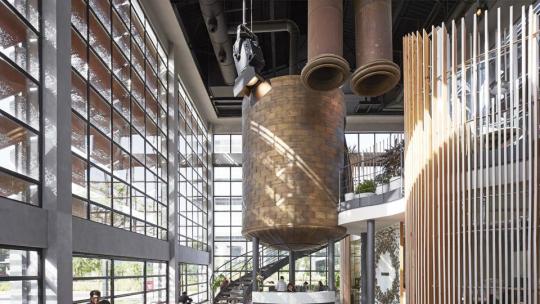
When a structure is saved, it can transform a neighbourhood. That’s the principle of adaptive reuse — that when you restore a crumbling building, turn the insides into something completely different and make it relevant again, you shine a light on the space, the area, and its history.We haven’t got that far yet. In Kolkata, a 93-year-old residence is now a boutique bed-and-breakfast, but all around it are crumbling historic homes.In Delhi, the rooftop Walled City Café overlooks a crumbling and neglected Shahjahanabad. In Mumbai, a once-iconic mill now hosts yuppie beer-guzzlers and theatre lovers, but most of the mills in the city stand forlorn.Still, it’s a start. “Adaptive reuse projects become an example for others to emulate,” says conservation architect Kirtida Unwalla. In south Mumbai’s Kala Ghoda art district, she points out, what started as isolated incidences of heritage reuse have turned into a flood of cafés, restaurants, retail stores and art spaces housed in bits of history.Unwalla helmed one such transformation — when the high-street brand Zara moved into the five-storey, 110-year old Ismail Building that now lights up the street it’s on.

The entrance to The Walled City Cafe, situated in a 200-year-old haveli in Old Delhi. The principle of adaptive reuse is that when you restore a crumbling building, turn the insides into something completely different and make it relevant again, you shine a light on the space, the area, and its history. ( Sanchit Khanna / HT Photo ) “The new spaces coming up in heritage structures has really changed the area, making it livelier and more visited,” she says.Some of the earliest examples of adaptive reuse in India involved the palaces of Rajasthan. The 15th-century Neemrana Fort was once of the first; it was converted into a luxury hotel in 1991. Other examples include the 18th-century Lake Palace in Udaipur and the 19th-century Falaknuma palace in Hyderabad, both now ultra-high-end hotels.In the cities, the practice is still fairly new. But it’s happening.A decrepit 90-year-old four-storey house in Kolkata was recently in the spotlight after its owner put it up for sale, but only to buyers who committed to not tearing it down.“The enhanced value of a restored and adapted structure is yet to be fully appreciated in India, as it is in the UK, Europe and even the US,” Unwalla says.
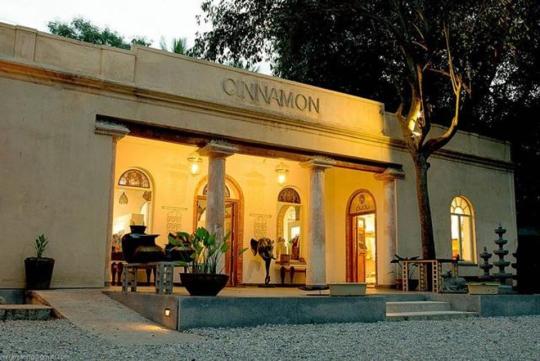
Built as an orphanage in 1876, this Bengaluru building now houses the boutique store Cinnamon. ‘We picked the space because restoring it would be a way to remember Bangalore as it was,’ says owner of the brand Radhika Poddar.Money is a key factor, of course. Restoration, renovation and maintenance are significantly more expensive for old structures that typically need specific types of wood, roofing and tile, and need near-constant attention. The new tenants then take longer to turn profitable or make back their investment.“Big investments in restoration also often mean that the demography of a place changes,” says conservation architect Aishwarya Tipnis. “To make up for the money put in, if one runs a café, it has be a high-end one. This leads to more such places in the area, often changing a middle-class neighbourhood into a gentrified one. So one needs to ask what we are preserving,” she says.It doesn’t help that the government offers virtually no incentives, instead turning red tape into another deterrent.As Tipnis puts it: “We could’t really have a gallery like London’s Tate Modern or Paris’s Musee d’Orsay because the flexibility of using an abandoned power station or railway station for something so different simply does not exist here.”Delhi: Coffee, literature, history...On the first floor of a 200-year-old old haveli in Old Delhi, is a café that looks out over the Jama Masjid and the sprawl of Shahjahanabad.
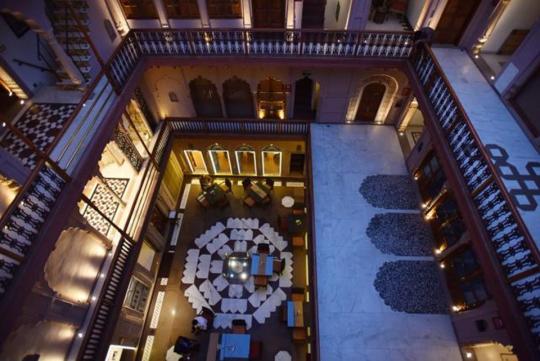
Chandni Chowk’s Haveli Dharampura was restored by BJP MP Vijay Goel, a heritage enthusiast and activist. It is now a luxury heritage hotel and offers kathak and classical music performances. ( Sanchit Khanna / HT Photo ) “The house belongs to my sister-in-law, Zeenat Shafi, and was practically abandoned for over 12 years, after she moved to Canada,” says Sheeba Aslam Fehmi, who lives next door and is food curator for the Walled City Café. “By 2016, it was in such bad shape, it needed urgent repairs. When we were halfway through we realised that this nice open space on the first level would be a good place for people to meet, hangout and eat. It reminded us of the beautiful cafés of Istanbul.”The building had what she calls an ‘Anglo-Muslim’ ambience, with fireplaces, chimneys and a courtyard. It is now a popular venue, especially for literary and cultural events.Not far from WCC, is the splendid Haveli Dharampura — a grand home from 1887, with intact marble jaalis and wide courtyard, now a luxury hotel. It’s owned by the BJP MP Vijay Goel, a heritage enthusiast and activist. “The idea was to restore a part of it as a museum to set an example for others to emulate,” says his daughter, Vidyun, who handles marketing for the space.Once restoration began, the spacious rooms and corridors seemed perfect for a hotel. Work that was planned for six months went on for over six years; the hotel opened its doors in 2016. In addition to rooms and dining, it offers Kathak and classical music performances. “Turning it into a hotel has really helped with funding of the upkeep of a structure like this,” says Vidyun.Kolkata: Check in, check it outThis building was saved as a result of another interesting urban heritage phenomenon — the heritage walk.

The Calcutta Bungalow is a heritage bed-and-breakfast in a restored 1920s residence. This part of the city has several such once-splendid, crumbling structures. ( Samir Jana / HT Photo ) The founders of Calcutta Walks came upon it while researching a new walk around Radha Kanta Jew Street. “There it stood, with its green lattice shutters, arched windows and generous wide balconies,” says Anirban Dutta. “We keep coming across such buildings on our walks around the city, and most of them are in a shambles. We decided to do something about this one because it had so much potential — the ornate facade, wide road in front, relaxed and friendly neighbourhood.” The plan was to turn it into a bed-and-breakfast, “because, you know, we’re already in touch with tourists all the time”.The 90-year-old structure needed much more work than they anticipated. “It was hard to raise the funds,” he says. The restoration took two years, with artisans coming in from Murshidabad to work with chuna-surkhi or lime concrete. The place opened to guests in May 2018. It will take at least until 2023 to break even, Dutta estimates. “But we hope more people will see that it is possible to work on these beautiful buildings and not tear them down.”Goa: Beer at a millThis was a project that began with architect and heritage conservationist Raya Shankwalker deciding he wanted to find an old structure and make it an example of adaptive reuse.
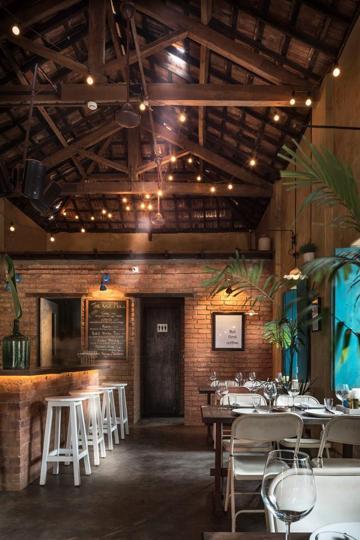
The Rice Mill Cafe, in an adapted rice mill in Morjim, Goa, wears a distressed look to retain a sense of what it was — as well as keep costs down. ‘In a lot of such projects, people go overboard with the spending, and then it becomes very difficult to make the venture profitable,’ says owner, architect and heritage conservationist Raya Shankwalker. ( Harshan Thomson ) His friend said he had just the think — an abandoned rice mill his family owned in Morjim, a coastal town in north Goa. “Travelling in Europe over the years, I’ve spent so many wonderful hours in quaint cafés and bars, housed in some beautiful old structure with an interesting story,” Shankwalker says. “I wanted to do a similar thing here.” So he and a relative invested in the mill.The exterior was intact, and the idea was to give the interiors a distressed look so it would feel like a mill. This helped keep budgets down. Shankhwalker says that kept the whole operation frugal too. “Our design is largely achieved by minimalism. Almost nothing expensive. Just surface treatments and simple elements of décor.” He adds that in a lot of such projects, people go overboard with the spending. “And then it becomes very difficult to make the venture profitable.”Adaptive reuse really works for commercial spaces because people like to be in a space with a story, he adds. Shankhwalker says the bar is now doing well and is well-entrenched in the area.Mumbai: Factory floor to office In Mumbai, an old soap factory is now a posh office and a buzzing café, with silos and chimneys still in place to hint at their history.
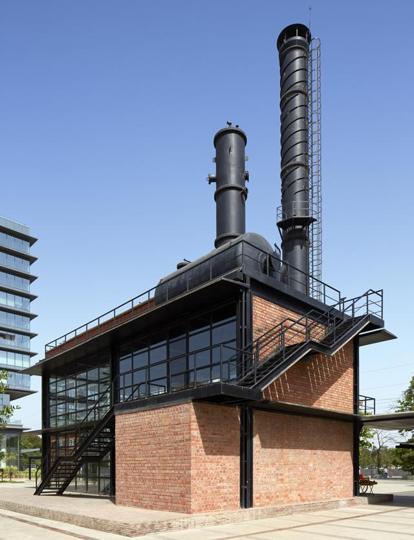
What used be the boiler space of the Godrej soap factory is now the Vikhroli Social. ( Edmund Sumner ) “When I first visited this Godrej property, which was to be redeveloped, we decided that the structure of the factory, which spoke to the group’s legacy, must be retained — but not as a museum,” says Anubhav Gupta, business head at Vikhroli and head of corporate social responsibility and sustainability at Godrej Properties. “We wanted it to be a functional space that spoke of the past but looked to the future.”So two of the structures on the plot are now the Imagine Studio, a marketing office for Godrej properties; what used to be the boiler space is the Vikhroli Social. While the structures are open-plan, with smart glass façades, the cast-iron factory equipment works as a reminder of the past.“We are going for a mixed use development approach that will have residences, offices and a five-star hotel too,” Gupta says.Bengaluru: browse with history Cinnamon, a clothing and home décor brand, specialises in products with an Indian aesthetic but contemporary design. When it came time to move from their leased store in Bengaluru, they decided to try and find a space that reflected their identity.“We came across this dilapidated bungalow at Ulsoor, in 2013. Restoration took about 10 months,” says Radhika Poddar, founder and owner of Cinnamon.Originally built as an orphanage in 1876, Poddar says she picked the space because restoring it would be a way to remember Bangalore as it was and maintain a piece of its heritage.The design suited her too — a courtyard perfect for a café; the rooms arranged around it ideal to showcase product lines. The challenge of maintenance remains. “I will say that one must be prepared to take on constant upkeep when one moves into a heritage structure,” Poddar says. “Still, it is a unique space, a piece of social history, and exactly what we were looking for. Read the full article
2 notes
·
View notes
Text
Discover the Top Murshidabad Tourist Places with Tour Yatras
Explore the rich history and culture of Murshidabad with Tour Yatras, your trusted guide to uncovering this historic town's hidden treasures. Renowned for its royal heritage, Murshidabad boasts stunning attractions like the Hazarduari Palace, Katra Mosque, and the serene Kathgola Gardens. Stroll through its vibrant bazaars and witness the intricate craftsmanship of local artisans. Whether you're a history enthusiast or a nature lover, Murshidabad tourist places offer something unique for everyone. Plan your trip today with Tour Yatras for an unforgettable journey into the heart of Bengal’s glorious past. Start your adventure now!
0 notes